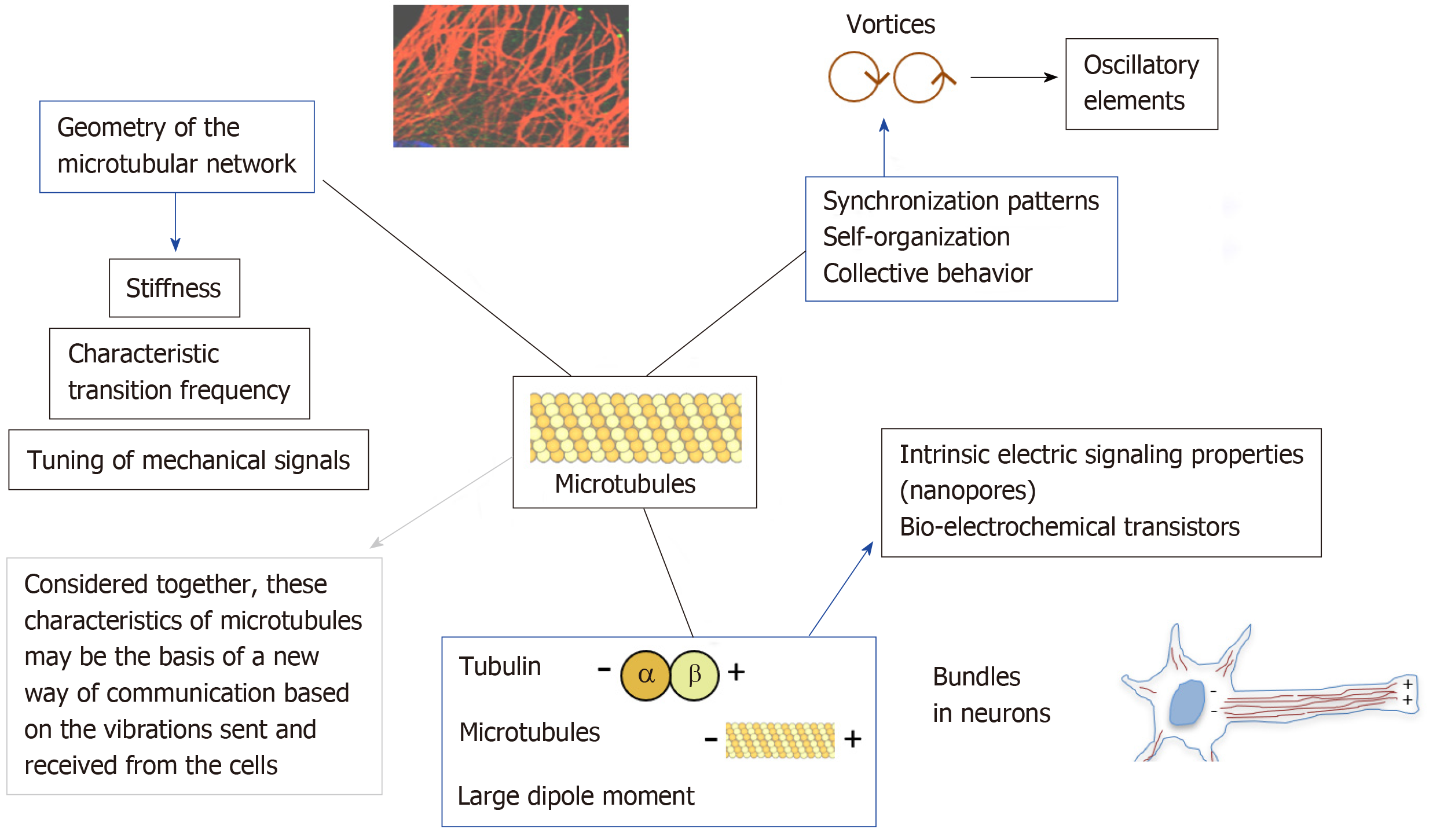Copyright
©The Author(s) 2019.
World J Stem Cells. Jun 26, 2019; 11(6): 297-321
Published online Jun 26, 2019. doi: 10.4252/wjsc.v11.i6.297
Published online Jun 26, 2019. doi: 10.4252/wjsc.v11.i6.297
Figure 1 Cellular microtubules: A network of oscillators that sync and swarm.
Microtubules are emerging as major players in crucial cellular activities, on the basis of a number of interrelated characteristics. These include: (A) The transfer of mechanical waves, changing their stiffness, and the transmission of longitudinal and lateral momentum on the basis of the frequency of their oscillation and the geometry afforded by their timely 3D assembly and disassembly within the cells; (B) The onset and propagation of electric fields and signaling, depending upon the large dipole moment of tubulin, developing both electrostatic polarity and functional directionality, and upon the lateral arrangement of tubulin dimers to create nanopores, interspersing the microtubular wall, and generating cation-selective oscillatory electrical currents; (C) The generation of bundles, as shown in brain microtubules, behaving as bio-electrochemical transistors forming nonlinear electrical transmission lines; (D) The ability to resonate mechanically in the presence of electromagnetic fields of defined frequencies, retaining memory states coupled with conductivity states, like a memory switch device; and (E) The property of synchronizing their oscillatory pattern and swarming into vortices, affecting the vibrational features of signaling peptides moving across the microtubular network by the aid of molecular motor machines, thus modulating biomolecular recognition patterning.
Figure 2 (Stem) cells as sensors and transducers of physical energies.
A growing number of signaling molecules inside and outside the cell has been shown to behave as mechanosensors/transducers and chromophores (see details in the text). These players modulate complex dynamics controlling multifaceted responses, including proliferation, migration, and differentiation.
Figure 3 Harvesting and releasing vibrational signatures to afford commitment of undifferentiated stem cells towards targeted fates.
Atomic force microscopy, terahertz field microscopy, scanning tunneling microscopy, and hyperspectral imaging can be used to harvest detailed oscillatory patterns, including mechanical, electric, and light waves. Computer analysis is then performed to acquire vibrational signatures from the investigated patterns. Ad hoc designed transducers are finally developed to provide high-fidelity and timely release of the acquired signatures onto undifferentiated (stem) cells to prime their lineage specific commitment. AFM: Atomic force microscopy; STM: Scanning tunneling microscopy; HIS: Hyperspectral imaging; TFM: Terahertz field microscopy.
- Citation: Facchin F, Canaider S, Tassinari R, Zannini C, Bianconi E, Taglioli V, Olivi E, Cavallini C, Tausel M, Ventura C. Physical energies to the rescue of damaged tissues. World J Stem Cells 2019; 11(6): 297-321
- URL: https://www.wjgnet.com/1948-0210/full/v11/i6/297.htm
- DOI: https://dx.doi.org/10.4252/wjsc.v11.i6.297











